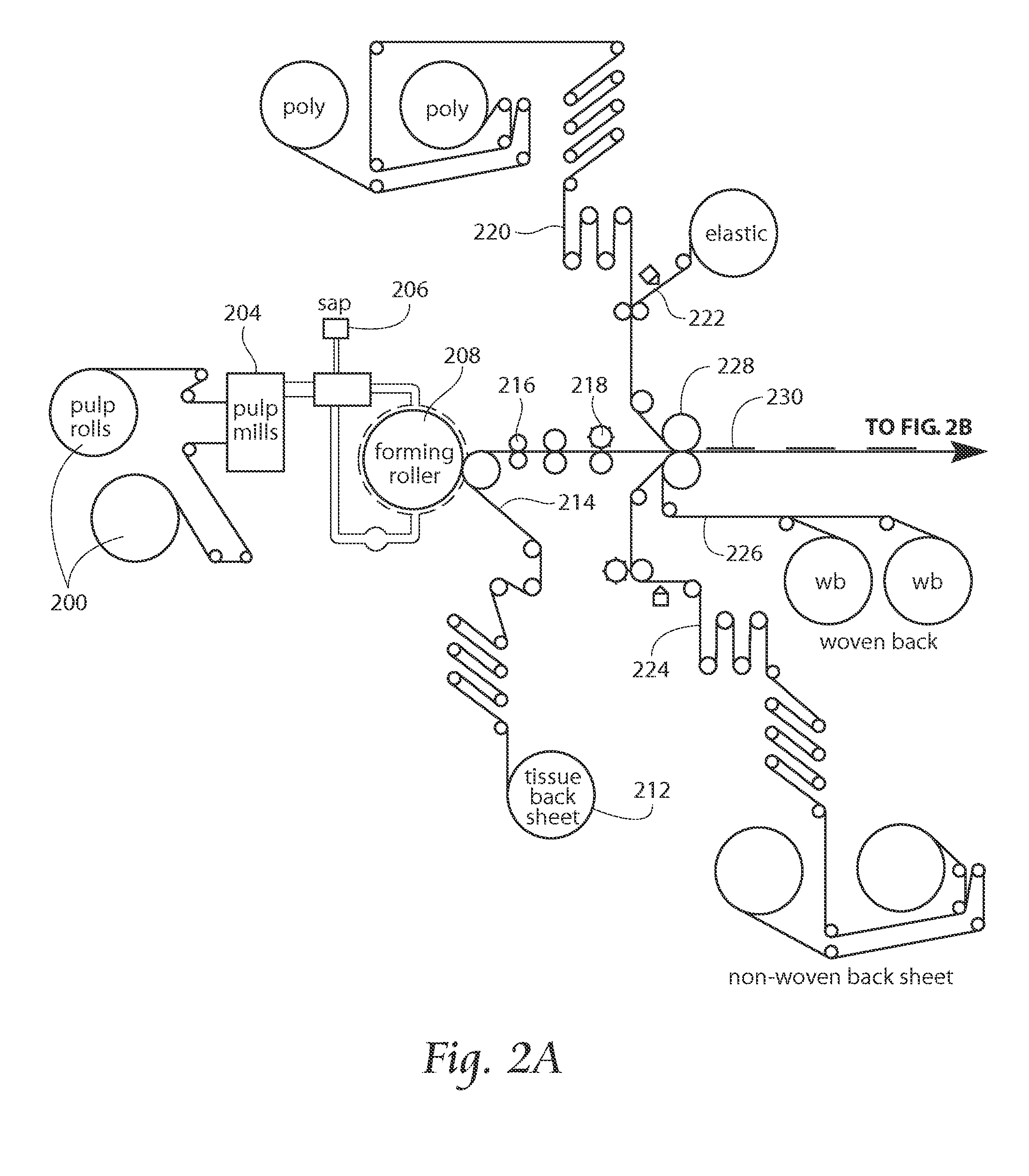Apparatus and method for minimizing waste and improving quality and production in web processing operations by automatic cuff defect correction
a technology of automatic cuff defect correction and apparatus, applied in the field of apparatus and methods for reducing waste and improving quality and production in web processing operations, can solve the problems of inefficiency of scale, laborious act of harvesting recyclable materials from defective products, etc., and achieve the effect of minimizing waste and improving quality and production
- Summary
- Abstract
- Description
- Claims
- Application Information
AI Technical Summary
Benefits of technology
Problems solved by technology
Method used
Image
Examples
Embodiment Construction
[0036]Although the disclosure hereof is detailed and exact to enable those skilled in the art to practice the invention, the physical embodiments herein disclosed merely exemplify the invention which may be embodied in other specific structures. While the preferred embodiment has been described, the details may be changed without departing from the invention, which is defined by the claims.
[0037]It is noted that the present waste minimization techniques and apparatus are described herein with respect to products such as diapers, but as previously mentioned, can be applied to a wide variety of processes in which discrete components are applied sequentially.
[0038]Referring to FIG. 1, a web processing operation starts with incorporating raw materials such as paper pulp and super absorbent polymer (SAP) in a pulp mill. The mixture is sent to a core forming drum, where cores are formed for retaining liquids. A core can be placed on a tissue and processed as shown. Eventually, an addition...
PUM
 Login to View More
Login to View More Abstract
Description
Claims
Application Information
 Login to View More
Login to View More - R&D
- Intellectual Property
- Life Sciences
- Materials
- Tech Scout
- Unparalleled Data Quality
- Higher Quality Content
- 60% Fewer Hallucinations
Browse by: Latest US Patents, China's latest patents, Technical Efficacy Thesaurus, Application Domain, Technology Topic, Popular Technical Reports.
© 2025 PatSnap. All rights reserved.Legal|Privacy policy|Modern Slavery Act Transparency Statement|Sitemap|About US| Contact US: help@patsnap.com



